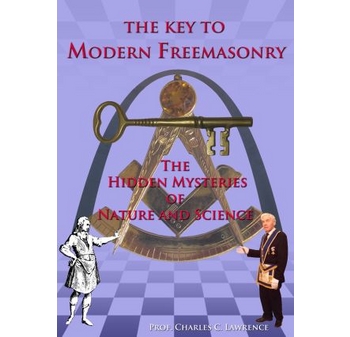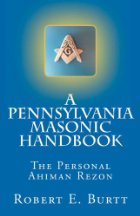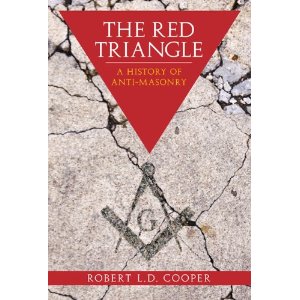 The early days of organised Freemasonry have been neglected for too long, largely because there is not a huge store of documents to be poured over and analysed. What the author has done in this valuable book is to look at the social, political, scientific, intellectual and religious background of the period in which we believe Freemasonry was originating and developing combined with personalities whom we know to have been involved in the early Grand lodge days and the major figures who formed part of their circles. Why are Freemasonry’s rituals laced with scientific concepts and the imperative for learning? Why such a reliance on allegory? Why is the outmoded science enshrined in Ritual so crucial? How did such a dubious group of founders create a brotherhood based on the strictest principles of humanitarian behaviour and why did the intrinsic beauty of the concept far outweigh their shortcomings? Continue reading
The early days of organised Freemasonry have been neglected for too long, largely because there is not a huge store of documents to be poured over and analysed. What the author has done in this valuable book is to look at the social, political, scientific, intellectual and religious background of the period in which we believe Freemasonry was originating and developing combined with personalities whom we know to have been involved in the early Grand lodge days and the major figures who formed part of their circles. Why are Freemasonry’s rituals laced with scientific concepts and the imperative for learning? Why such a reliance on allegory? Why is the outmoded science enshrined in Ritual so crucial? How did such a dubious group of founders create a brotherhood based on the strictest principles of humanitarian behaviour and why did the intrinsic beauty of the concept far outweigh their shortcomings? Continue reading
Tag Archives: History
A Pennsylvania Masonic Handbook: The Personal Ahiman Rezon by Robert E. Burtt

This book answers questions that many new Freemasons have asked themselves: “What do I do now? What are my options in the Brotherhood? Where can I contribute my talents?” Too often, new members are left to search on their own. “A Pennsylvania Masonic Handbook” offers practical advice on lodge membership, covers ritual, and gives thumbnail explanations of Masonic customs and practices within the jurisdiction of The Grand Lodge of Pennsylvania. It also is of interest for worldwide Freemasons seeking knowledge about the customs and history of the largest U.S. Grand Lodge. Furthermore it contains much that would interest the general reader seeking information about Freemasonry. Continue reading
The Red Triangle: A History of Anti-Masonry by Robert Cooper
 Anti-Masonry (or Masonophobia as it is increasingly being termed) is almost as old as Freemasonry itself but why does it exist and what are the motives of its proponents? Do these change over time and what purpose does it serve?
Anti-Masonry (or Masonophobia as it is increasingly being termed) is almost as old as Freemasonry itself but why does it exist and what are the motives of its proponents? Do these change over time and what purpose does it serve?
These, and other questions, are the subject of this book. Initially the reader is asked to consider some historical examples from the 18th, 19th, and 20th centuries (especially from the Nazi era), and ending with some contemporary manifestations of the phenomenon. Much of the latter is drawn from Cooper’s personal experience in the 1990s and early 2000s.
Attempts to engage in dialogue with Masonophobes in the hope of understanding the motives at play failed but in the process some possible reasons were revealed and these are discussed. Continue reading
Alain Bernheim: le rite en 33 grades, de Frederick Dalcho à Charles Riandey
Prix du livre d’histoire maçonnique 2011
Ce livre, fruit de plus de vingt années de travail de la part d’Alain Bernheim, est consacré à des événements que les francs-maçons dans leur très grande majorité ignorent, car ils ne sont évoqués dans la littérature maçonnique qu’avec de surprenantes erreurs, omissions et approximations. Ils constituent des moments charnières dans l’histoire de ce rite en trente-trois grades qui ne s’appelait pas encore Rite Ecossais Ancien et Accepté lorsque, de Charleston, à l’époque fief de l’esclavagisme, il annonça son existence au monde le 1er janvier 1803.
L’auteur décrit, presque au jour le jour, la genèse et le déroulement du drame qui déchira maçons européens lors de la scission qui amena la création du Suprême Conseil pour la France, il y moins d’un demi siècle. On lira les documents qui établissent dans cette affaire la responsabilité de Charles Riandey, Grand Commandeur du Suprême Conseil de France de son ami le Grand Commandeur du Suprême Conseil des Pays Bas ainsi que celle des Grands Commandeurs des deux Suprêmes Conseils des Etats-Unis d’Amérique. Continue reading
The Royal Arch Journey by Neville Barker Cryer
Over the years the Revd Neville Barker Cryer has delivered many lectures to Lodges throughout the country. His lectures manage to both entertain and inform the lodge members and one perennially popular subject is the Royal Arch Journey. In this volume the author draws on his many years of research into the topic to present an analyis of the history of the Royal Arch, its origins and development, and its place in the present day Masonic tradition. His findings may prove controversial for some as he goes back to its origins in the 18th century but all readers will find this book presents a fascinating and compelling argument. Continue reading



